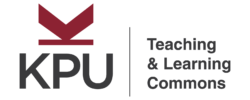What is it?
Traditional assessments, such as written exams, are often held up in opposition to authentic assessments, which align more closely with skills that graduates would be expected to demonstrate in the working world.
A video assessment can take many forms: students could record and narrate their solution to a problem (Allain, 2017); record demonstrations of practical skills (Erdmann & March, 2014); or record a clip explaining a recent scientific advance to the general public (Kanapeckas Métris, 2020).
Further examples of video assessments in higher education can be found in the review by Hawley and Allen: Student-generated video creation for assessment: can it transform assessment within Higher Education?
What are the benefits?
In a study of first-year chemistry lab students, those who submitted a video assignment on the correct reading of a graduated pipet were found to be more likely to report correct readings on their final exam and lab practical (Erdmann & March, 2014).
Students have multiple opportunities to record and re-take the video until they are satisfied with the result. This can attenuate performance anxiety that might be associated with a live presentation.
Video assessments also offer a chance to evaluate communication skills, in additional to students’ grasp on content.
What are the challenges?
If students are asked to produce an edited video, they will need access to resources on video editing. This ability is available in Kaltura, and the Teaching and Learning Commons has a brief introduction to the capabilities of this software.
A detailed rubric will be required to guide students in the production of the video and instructors in the evaluation of the video. Such a rubric should be aligned with learning outcomes, and if relevant, professional competencies.
Erdmann and March (2014) supply both their grading rubrics and video editing instructions to students and as Appendices II and III in the electronic Supplementary Information to their paper (free to access).
Who’s using this?
Although video assessments could be used in a variety of course contexts, it is likely particularly relevant to courses where students develop hands-on skills, such as lab courses.
Pending… if you’ve used this technique and you’re willing to share thoughts about your and your students’ experience, send me an email!
Resources
Video recording options:
- If demonstrating a practical skill: students can use smartphones or a portable camcorder borrowed from the library.
- If recording a screencast (a recording of events on a screen): students can use Kaltura Capture. The desktop version of Powerpoint also includes a recording and annotation feature. Descriptions of other options for recording video can be found on this page from KPU’s Learning Centre.
For guidance on how to have students submit their video assignments through Moodle, see:
- Leung, R. (2021, Feb 19) Setting Up a Kaltura Video Assignment in Moodle. KPU Teaching & Learning Commons Knowledge Base. https://kputlcommons.freshdesk.com/support/solutions/articles/43000524427-setting-up-a-kaltura-video-assignment-in-moodle
References
Allain, R. (2017, Aug 16) The Best Way to Test Students? Make Them Explain It on Video. Wired. https://www.wired.com/story/the-best-way-to-test-students/
Erdmann, M. A., & March, J. L. (2014). Video reports as a novel alternate assessment in the undergraduate chemistry laboratory. Chemistry Education Research and Practice, 15(4), 650. https://doi.org/10.1039/C4RP00107A Direct link to article (free RSC registration required.)
Hawley, R., & Allen, C. (2018). Student-generated video creation for assessment: Can it transform assessment within higher education? International Journal of Transformative Research, 5(1), 1. https://doi.org/10.2478/ijtr-2018-0001 KPU Library Link.
Kanapeckas Métris, K. L. (2020). Activities and assessment solutions for students in advanced molecular genetics and biochemistry to direct and engage with public communication in an online environment. Biochemistry and Molecular Biology Education, 48(5), 439-441. https://doi.org/10.1002/bmb.21389 KPU Library Link.

